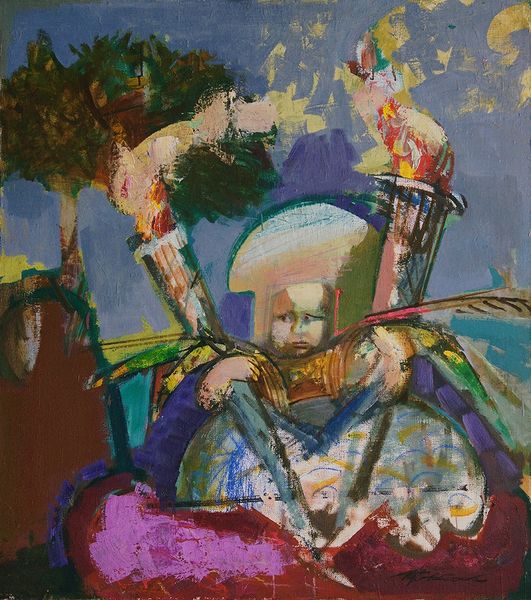
Copyright: Alexander Bogen,Fair Use
Editor: Alexander Bogen's "Figure with Black Touch," an oil painting from 1979, strikes me as both unsettling and intriguing. The figure is barely there, just hinted at through these aggressive brushstrokes and swathes of color. How do you interpret this work? Curator: The “black touch,” as Bogen titles it, is powerful. Doesn’t it suggest a psychic weight, a shadow clinging to the figure? We often see black as a color of mourning, of hidden things, perhaps even trauma carried through generations. And Bogen, given his biography as a Holocaust survivor, likely imbued this work with layers of personal and historical resonance. Do you sense that disquiet here? Editor: Yes, definitely. I also notice how the composition is unbalanced, almost falling apart. Is that intentional, to amplify the sense of unease? Curator: Precisely. Bogen disrupts traditional portraiture. It's not about capturing likeness, but about conveying the inner turmoil, the fragmented self after immense suffering. Even the splashes of brighter colors - the reds, yellows - can be seen as points of tension, highlighting the psychological conflict at play. Editor: So the abstract elements contribute to a deeper understanding of the human condition, rather than detracting from it. Curator: Indeed. It compels us to consider the cultural memory embedded in these seemingly simple forms. Are there echoes of Expressionist styles in his application of paint? Think about how visual language carries stories, coded in ways we might not immediately grasp. Editor: It’s fascinating to consider the layered meanings within abstraction. It makes me realize that the symbols and composition tell the true story, rather than a straightforward depiction. Curator: Absolutely. Visual symbols function as silent storytellers, speaking across time and culture.
Comments
No comments
Be the first to comment and join the conversation on the ultimate creative platform.













